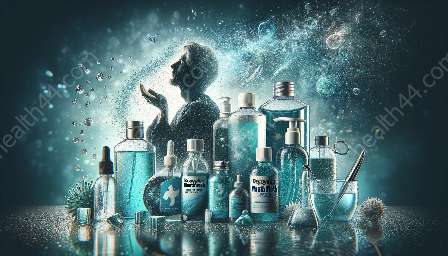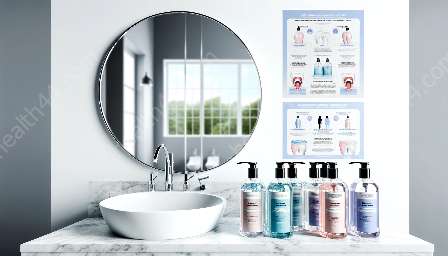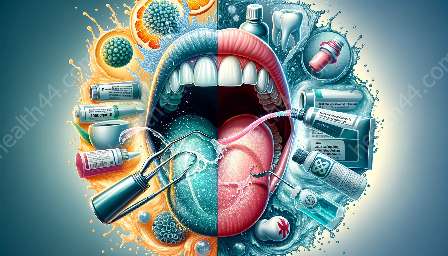Chlorhexidine mouthwash is often recommended by dentists for its effective antimicrobial properties, particularly in the prevention and treatment of gum disease and oral infections. However, one of the common concerns associated with this mouthwash is the potential for staining teeth and oral tissues. Staining caused by chlorhexidine mouthwash can often be a source of frustration for users, but there are several steps that can be taken to minimize or prevent this issue while still reaping the benefits of its antimicrobial effects.
Understanding Chlorhexidine Mouthwash
Chlorhexidine mouthwash is widely used as an oral antiseptic for preventing and treating various dental conditions, including plaque buildup, gingivitis, and periodontitis. It works by disrupting the cell walls of bacteria, leading to their death and effectively reducing the microbial load in the mouth. Despite its effectiveness, chlorhexidine mouthwash has been associated with the unwanted side effect of staining, which can affect the appearance of teeth and other oral surfaces. This staining is often visible as brown or yellowish discoloration, and may also affect dental restorations and appliances such as braces or dentures.
Steps to Minimize Staining Caused by Chlorhexidine Mouthwash
1. Proper Brushing and Flossing: One of the first steps to minimize staining caused by chlorhexidine mouthwash is to maintain a good oral hygiene routine. Regular and proper brushing, as well as flossing, can help remove plaque and other debris from the teeth and oral surfaces, reducing the likelihood of staining. It is important to brush at least twice a day and floss daily to keep the mouth clean and healthy.
2. Timing of Chlorhexidine Use: Consider the timing of chlorhexidine mouthwash use in your daily routine. It is advisable to use chlorhexidine mouthwash at least 30 minutes after brushing your teeth. This helps to minimize the potential for staining, as the tooth surfaces are less likely to attract the staining agents present in chlorhexidine when they are clean. Additionally, using chlorhexidine at a different time of day from when you intend to brush and floss can help reduce the risk of staining immediately after cleaning your teeth.
3. Thorough Rinse and Spit: After using chlorhexidine mouthwash, be sure to thoroughly rinse your mouth with water and then spit it out. This can help remove any residual chlorhexidine solution from the mouth, reducing the chance of it adhering to the teeth and causing stains. It is important to follow the instructions provided by the dentist or on the product label regarding the duration and volume of the rinse in order to achieve optimal antimicrobial effects while minimizing staining.
4. Alternate Use: If staining remains a concern despite careful use, consider using chlorhexidine mouthwash on alternate days or as recommended by your dental professional. This approach can help balance the antimicrobial benefits of chlorhexidine with the need to minimize staining, allowing for effective oral care without excessive discoloration.
5. Regular Dental Check-ups: Schedule regular dental check-ups and professional cleanings with your dentist to monitor and maintain the health of your teeth and gums. Dental professionals can provide personalized guidance on using chlorhexidine mouthwash and offer additional strategies to prevent staining while ensuring optimal oral health.
Additional Tips for Maintaining Oral Hygiene
While minimizing staining caused by chlorhexidine mouthwash is important, it is equally essential to maintain overall oral hygiene and aesthetics. Here are some additional tips to support oral health:
- Use of Whitening Toothpaste: Consider incorporating a whitening toothpaste into your oral care routine to help counteract any mild staining that may occur. Whitening toothpastes can help remove surface stains and maintain the natural brightness of teeth, complementing efforts to minimize chlorhexidine staining.
- Professional Teeth Whitening: If staining becomes pronounced or persistent despite preventive measures, consult with a dental professional about professional teeth whitening options. Professional whitening treatments can effectively address stubborn stains and restore the natural color of teeth, helping to counteract any discoloration from chlorhexidine use.
- Diet and Lifestyle Choices: Maintaining a balanced diet and minimizing the consumption of staining substances such as coffee, tea, and tobacco can contribute to overall oral aesthetics. Additionally, avoiding habits that can lead to oral discoloration, such as smoking, can support efforts to maintain a bright smile alongside chlorhexidine use.
- Oral Care Products: Explore a range of oral care products that are formulated to minimize staining and promote oral health. Some toothpastes and mouthwashes are specifically designed to address staining caused by chlorhexidine and other factors, offering a proactive approach to maintaining a stain-free smile.
Conclusion
Chlorhexidine mouthwash offers valuable antimicrobial benefits for maintaining oral health, but the potential for staining can pose a cosmetic challenge for many users. By implementing proactive steps such as proper oral hygiene practices, thoughtful chlorhexidine use, and professional guidance, individuals can minimize staining while still enjoying the antimicrobial advantages of chlorhexidine mouthwash. With a holistic approach to oral care and personalized strategies to address staining concerns, individuals can maintain a healthy and aesthetically pleasing smile alongside the use of chlorhexidine mouthwash.









